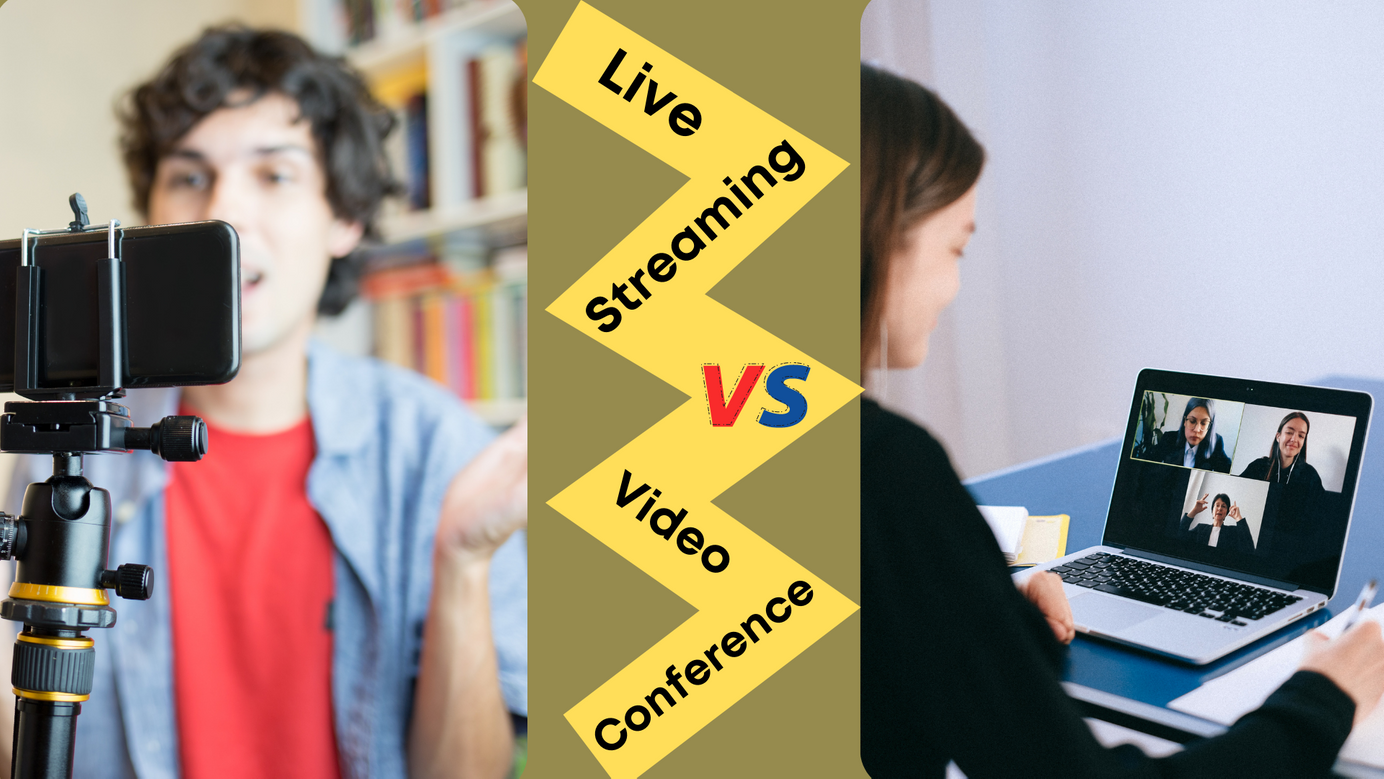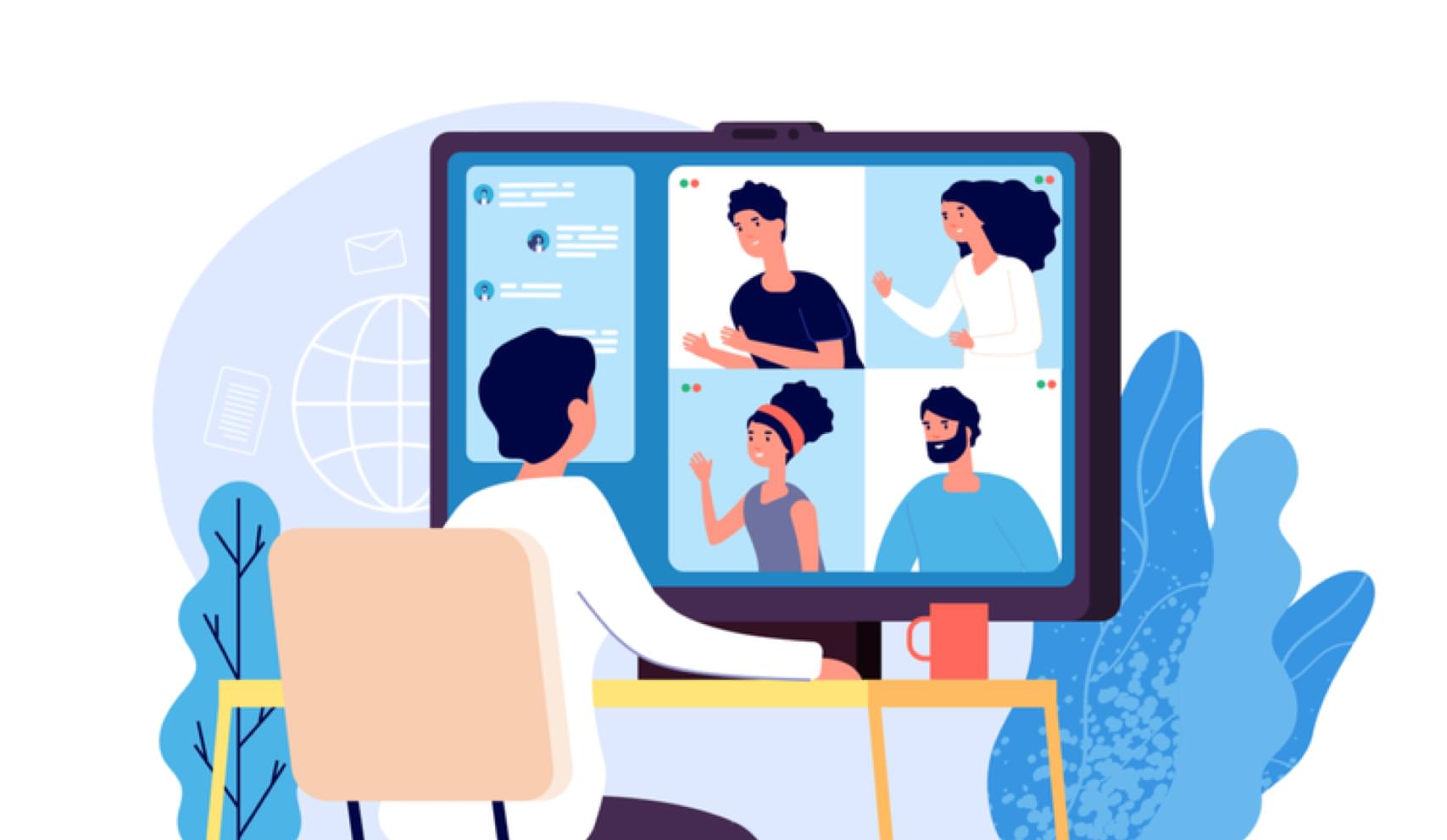
Livestreaming vs Video Conferencing: Differences and Which One to Use?
The terms livestreaming and videoconferencing are often used interchangeably since several people think they mean the same.
Livestreaming and video conferencing have become popular in this digital age. More so, with the COVID-19 pandemic, which has led to a ban on physical gatherings, livestreaming and video conferencing have become necessary and the new normal. Companies worldwide are making use of various platforms to connect with audiences over the internet.
Interviews, concerts, cocktails, etc., are now being done over the internet, using various software. Often, livestreaming and videoconferencing are confused. Choosing between these two can be a pain in the neck. This is because they have some similarities, though they are different. In this article, we show you the differences between livestreaming and videoconferencing.
What is Livestreaming?
Livestreaming can be defined as broadcasting an event over the internet as it occurs. This method of broadcasting allows you to reach a large audience, and the video quality is amazing. Livestreaming involves digital data (usual video) flowing from the broadcaster or host to the ones viewing the broadcast.
Livestreaming is made possible by several livestreaming software. Popular platforms for livestreaming include Facebook Live, YouTube, Zoom Webinars, and Microsoft Stream. Livestreaming allows viewers to ask questions or comment and the host to respond. Examples of scenarios where livestreaming can be employed include broadcast by a news station, music show, and a college lecture.
What is Video Conferencing?

Video conferencing is a gathering that is done digitally, allowing participants to communicate among themselves while sharing screens. Platforms for video conferencing include Zoom Meetings, WebEx Meetings, Microsoft Teams, Google Hangouts, and WebEx Teams. Examples of scenarios where video conferencing can be employed include a meeting of not more than twenty people, a job interview, and a Zoom training program.
Why is Livestreaming Often Confused with Video Conferencing?
The terms livestreaming and videoconferencing are often used interchangeably since several people think they mean the same. This is because of the similarities the two have. With livestreaming and video conferencing, you can broadcast an event live, though prerecorded elements can be employed at times.
More so, the two make use of the internet. They both allow users to share the screen and chat via texts. They also allow the director or host to mute guests. Below we show you the differences between livestreaming and videoconferencing.
The Differences Between Livestreaming and Video Conferencing

Livestreaming and video conferencing are different. Livestreaming allows your broadcast to reach a large audience. On the contrary, video conferencing is limited to a small group of people, usually not more than twenty. Video conferencing is best used for real two-way communication. This is different for livestreaming, which in most cases allows real one-way communication.
With livestreaming, you have full control over what your guests receive during the broadcast. This is contrary to live broadcast, where you have less control of what your audience sees. With livestreaming, you can strengthen the message you're sending out to your audience by using texts or features like company logos. In video conferencing, everyone participates actively, and your audience may not feel relaxed. On the other hand, in livestreaming, your audience is likely to feel relaxed.
Livestreaming and Video Conferencing: Which One to Choose?
If you want to connect with an audience, you may wonder which one to choose between livestreaming and video conferencing. Each is best suited for certain scenarios. If you want to conduct a job interview, a video conference will do, whereas if you're going to conduct a seminar that reaches hundreds of people, livestreaming will be ideal. However, livestreaming comes with more advantages as compared to videoconferencing. Below are reasons why livestreaming is ideal.
Allows you to Reach a Large Audience
Livestreaming is the way to go if you want a one-to-many broadcast. With livestreaming, you can reach a large audience, something which is not possible with videoconferencing. The good thing about livestreaming is that there are services like Livepush, which enables you to stream to multiple platforms at the same time.
It is Cost-Effective
Livestreaming is cost-effective, especially if you are using an app like the Livepush app. With the Livepush pricing plans, you're guaranteed the cheapest streaming services ever. No need for you to strain your budget whenever you want to livestream.
It Gives an Excellent Broadcasting Experience
When streaming, you probably want the video quality to be top-notch. Livestreaming offers you that and more. If you stream using a service like Livepush, you're guaranteed an even better streaming experience. The live push app allows you to stream from pre recorded videos on your preferred choice of platform. Features like cloud recording, coupled with a user-friendly dashboard, guarantees you the best livestreaming experience.
It Gives the Host Full Control of the Broadcast
The other reason why livestreaming is a better choice as compared to videoconferencing is that you're guaranteed full control of what your audience can view. With live broadcasting, your audience is likely to feel relaxed compared to videoconferencing, where everyone participates.
Note: Although livestreaming comes with a lot of advantages, it also has its cons. It is not as easy to set up as video conferencing. In video conferencing, it is also relaxing and convenient for participants to discuss. The screen can be shared too.
However, videoconferencing can not accommodate a huge audience. The video quality is low compared to video livestreaming, which may not be the best if you want a formal presentation style.
Final Verdict
In this digital age, it's easy to hold an event from anywhere globally, reaching a large audience over the internet. There are so many ways to go about it, and the best thing is that you can do it live with the help of some software. You can do a videoconference or Livestream. Each has its pros and cons. However, the best option is livestreaming which has no limitation on the size of the audience.
Also, livestreaming allows you as the host to have full control of what your audience can view. Although video conferencing is easy to set up, it is out-competed by livestreaming. Livestreaming offers you a unique experience that can change your presentations. To up your game when it comes to live to stream, you can use Livepush, which is designed for your convenience.
